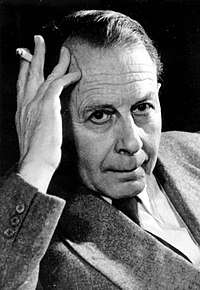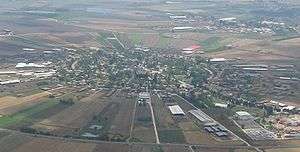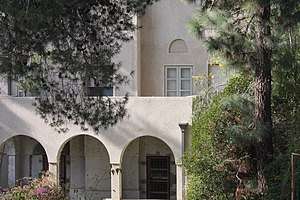Richard Kauffmann
Richard Kauffmann (1887–1958) was a German-Jewish architect who migrated to Palestine in 1920. His architecture was influenced by Ludwig Mies van der Rohe, a proponent of the International Style, and was applied to the local landscape, laying the architectural groundwork for the nascent State of Israel and the White City, as Tel Aviv's International Style architecture became known.[1]



Biography
Richard Kauffmann was born in 1887 in Frankfurt-on-Main, Germany.[2] In 1907, he began to study art at the Städelschule, but transferred to architecture studies in Amsterdam the following year. In 1909, he moved to the Technical University of Munich, graduating in 1912. In 1914, he opened an office in Frankfurt.
During the First World War Kauffmann fought on the Eastern Front, where he became aware of the persecutions directed against East European Jews.[3]
In 1919, Kauffmann met Arthur Ruppin, who invited him to design new Jewish settlements in Palestine[2] as leading physical planner of the Zionist enterprise.[3] At that point, Kauffmann was already government town planner in Christiania, now Oslo, the capital of Norway.[3]
In 1920, he migrated to Eretz Yisrael, at that point a British-controlled territory. Between 1920 and 1932, Kauffmann was the chief architect of the Palestine Land Development Company (Hachsharat HaYishuv) of the Zionist movement. Kauffmann designed and initiated, almost alone, a full architectural master plan for the new rural villages of many kibutzim and moshavim in the northern valleys (Jezreel Valley), most notably Ein Harod, Kfar Yehoshua, Degania Alef, Kfar Yehezkel and Nahalal.
Nahalal, the first moshav ovdim, was designed in a circular shape, where public buildings were located in the middle surrounded by a circular road, then the agricultural farm buildings about 20 metres (66 ft) from each other, and then the farms and fields 45 metres (148 ft) wide and hundreds meters long, forming a whole shape of sunshine rays.
His designs for the children's house, kindergarten and school in Degania Alef embodied the social and educational principles of the kibbutz movement.[4]
Kauffmann was asked to design the northern neighborhoods of Tel Aviv, based on the urban plans of Patrick Geddes. In 1927, he was appointed a member of the British Mandate town planning committee. He built private residences all over the country and participated in design competitions. He was one of the architects of the Levant Fair (Hebrew Yarid HaMizrah) in 1932–1934.[2] He planned the layout of the pavilions.[5]
Kauffmann designed some new Israeli cities, such as Afula and Herzliya, and neighborhoods in major Israeli cities such as Rehavia, Beit Hakerem, Talpiyot and Kiryat Moshe in Jerusalem, and Hadar HaCarmel, Neve Sha'anan, Bat Galim and Central Carmel in the city of Haifa.
The main idea in his urban planning was the incorporation of Ebenezer Howard's idea of Garden suburbs as a manifestation of the social ideals with the ideals of agricultural-Zionist communities and with the pragmatical needs of the inhabitants of those communities and the settling organizations requests. He was influenced by the Neoclassicist architecture, but his urban and agricultural community planning also addressed the specific environmental and climate conditions.
See also
- Architecture in Israel
References
- Zach, Elizabeth (2012-03-15). "The Influence of Bauhaus on Architecture in Early Palestine and Israel". The New York Times. ISSN 0362-4331. Retrieved 2016-06-08.
- "Richard Kaufmann". ArtLog. Retrieved 2018-08-13.
- Esther Kauffmann Forsen (ed.), Richard Kauffmann – Architect and Town Planner: A daughter's perspective on his life and work, accessed 13 August 2018
- "Degania & Nahalal". UNESCO World Heritage Centre. Retrieved 2016-06-08.
- "The Orient Fair". ArtLog. Retrieved 2016-06-08.
External links
| Wikimedia Commons has media related to Richard Kauffmann. |
- The personal papers of Richard Kauffmann are kept at the Central Zionist Archives in Jerusalem. The notation of the record group is A175.